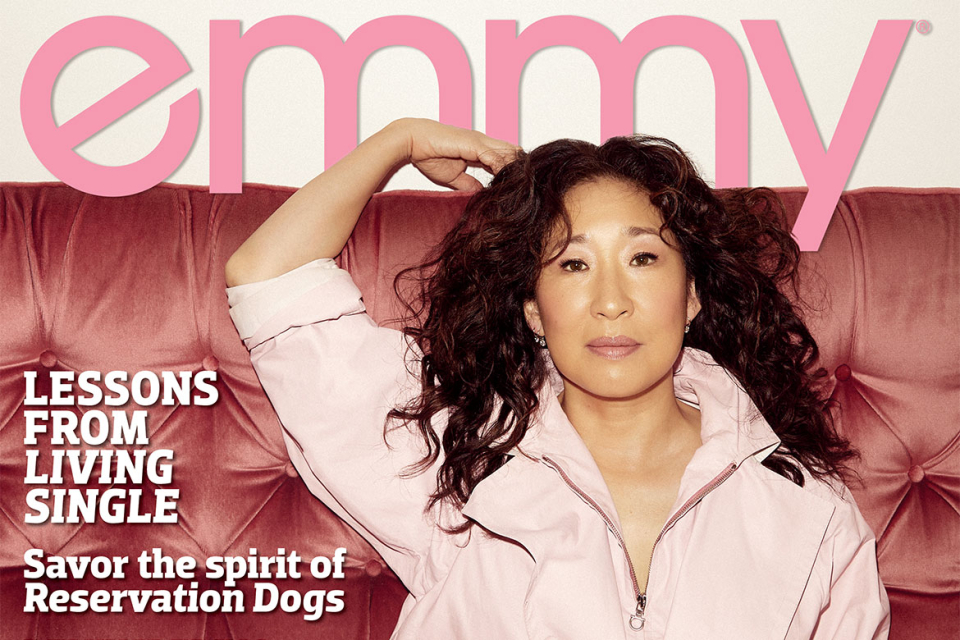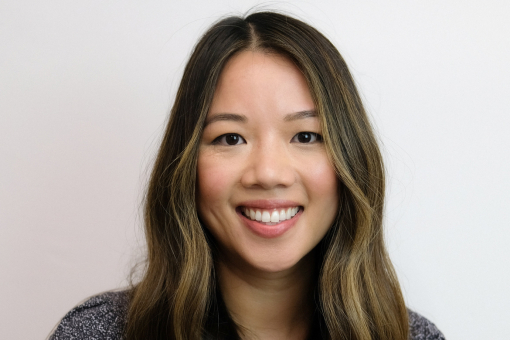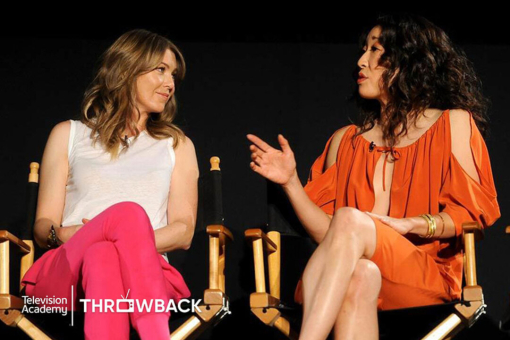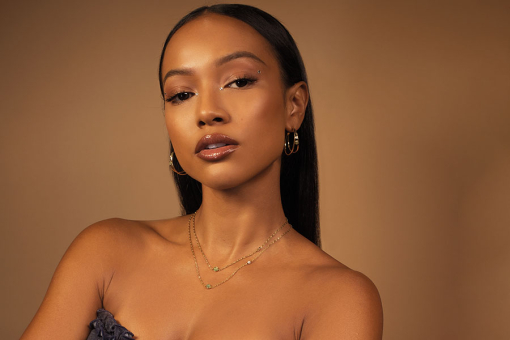Sandra Oh tends to render her colleagues rhapsodic, histrionic and, in one case, mute with admiration.
Ask the actors on her new Netflix series, The Chair — in which she stars and also executive-produces — and several details will recur. If they hadn't worked together before, they will likely have met at awards shows over the years — and there have been dozens. Oh has won four SAG Awards, stacked up 12 Emmy nominations and cohosted the Golden Globes (she's also won two of those).
When people describe what it's like to work with her, the words rigorous , playful , game and iconic are bandied about repeatedly. During an interview from London after a day of filming for the final season of BBC America's Killing Eve, Oh exhibits all those qualities — with a dance number thrown in.
After balking at the video option for the call, insisting she looks awful after a long day on the set, Oh gamely turns on her camera and reveals her lovely self, hair up in a messy bun and face scrubbed clean of makeup, save for slight smudges below her eyes. She is present and engaged, listening with her whole being, responding earnestly — the same characteristics that make her acting so exceedingly watchable. When she digs into a role, the audience wants to dig with her.
Amanda Peet — whose credits on The Chair include creator, writer, executive producer and showrunner — recalls the first time she saw Oh perform, in Diana Son's play Stop Kiss at Manhattan's Public Theater. "It was one of those seminal moments in my acting career, because I couldn't understand how she was so real," Peet recalls. "How was she doing that? I was totally blown away."
Oh is thrilled to hear that compliment, "because that's what attracts me to other actors. I love it so much when an actor is doing something you can't figure out."
The Chair, premiering August 20, is loaded with characters who behave in real and unexpected ways.
Set at fictional Pembroke University, the story centers on Oh's character, Ji-Yoon Kim, the first female chair of the English department. One of Pembroke's few BIPOC professors, she enters her new job eager to shake the system free of its old, white, male dominance. In a moment that foreshadows both the humor and the hurdles to come, the first time she sits at her desk, the chair itself gives way and throws her sideways.
Other apparently solid foundations will give way over the six episodes of this limited series, as Ji-Yoon navigates the savage labyrinth that is academia.
Not for nothing does the list of executive producers include David Benioff (Peet's husband) and D.B. Weiss, cocreators of HBO's Game of Thrones. When you play the game of tenure, you win or you die. Bernadette Caulfield (Game of Thrones) and Daniel Gray Longino (Pen15 , Miracle Workers) are also executive producers; Longino also directed each of the 30-minute episodes.
Peet created The Chair — her first outing as a showrunner–executive producer — by merging two other ideas. As an actress, Peet had starred with Jay Duplass in the HBO series Togetherness, which he'd created with his brother, Mark Duplass, and Steve Zissis. Afterwards, Peet and Jay started developing a story about a widower.
Then Peet hit on something else entirely: "What would happen if you had a longstanding and profound relationship with a white man who transgressed, and what if you were also his boss, and also a woman who was constantly at risk of being underestimated in your place of work?"
From that combination of plotlines came Duplass's character, Bill Dobson, a beloved professor reeling from the death of his wife, who finds his longtime connection with Ji-Yoon deepening as he falls apart. "In Togetherness, Jay was my boss — my showrunner, my director and my writer," Peet says. "So it was fun to be his boss and get back at him, and make him show his butt on camera because he made me show my boobs on camera. It was tit for tat, literally."
She also appreciated him for his mind. "He's my work husband. He's obviously a great filmmaker, so he was incredibly helpful behind the scenes, and he knows everything about making a TV show."
Peet was also interested in exploring intergenerational relationships, and a college campus provided the perfect setting. "I'm sure I was grappling with my own obsoleteness as a middle-aged lady in Hollywood, so that was a factor as well," she says drily. An argument with her daughter, who accused her of not being feminist enough, supplied "another driving force behind the show."
Peet wrote the role of Ji-Yoon with Oh in mind, then enlisted a mutual friend, actress Sarah Paulson, to ask her to read the pilot. "I stalked her," Peet notes.
Oh's response was immediate. "I have felt that a few times in my career — and I think my sense of that is getting honed — where I'll get a piece of material and I will immediately understand the writer's voice," she says. "And I absolutely found that with Amanda's. Particularly the humor and the world that she was trying to build. And that she gave a lot of space for Ji-Yoon and me to create a really fully-fleshed character."
The whole campus is full of such characters. One standout is Joan Hambling (Holland Taylor), a professor who isn't connecting with her students anymore. And frankly, she doesn't care, which delighted the actress playing her.
But Taylor cared a great deal about working with Oh. "I've known her for years, but I never worked with her," she says. "I mean, this is Sandra Oh, rather than the girl that I'm sitting next to at some awards show. Suddenly I felt oddly intimidated, which I needn't have been, because she's the easiest
January and February of this year, in Pittsburgh, a winter made bleaker by the peaking Covid-19 surge. "It was a very Kafkaesque experience to be shooting this series," Taylor says. "But I never thought of any of it when I was at work. It was really an object lesson of how being involved in something creative will save us from everything."
The college set often resembled a medical environment, with masks, face shields and even scrubs. "It was hard because we couldn't do the usual things like have a read-through, or meet up, have drinks — the things you really do need to create chemistry," Oh says. "But it pushed everyone to lean forward and lean into, 'I really need to connect with you right now.'"
Peet credits Oh and Duplass with creating a welcoming atmosphere despite the hazards. "I love that they both recognized and shared the desire to make it feel like a company, especially during Covid."
Duplass adds, "Sandra and I would always ask people to show us their faces, which is weird — it almost feels like a potential MeToo moment. But we wanted to see faces. I had not seen our director's face prior to shooting, in real life, and I was like, 'Dan, go over there and take off your mask. I need to see your face.' We made it fun in that way."
Duplass, who's from New Orleans, insisted on celebrating Mardi Gras with the cast and crew; he and Oh flew in king cakes and carnival beads "that had to be sanitized, deeply." ...
For the rest of the story, pick up a copy of emmy magazine, HERE
For a peek behind the scenes of our cover shoot with Sandra Oh, click HERE
More articles celebrating Asian American & Pacific Islander Heritage Month.
This story appeared in its entirety in emmy magazine, Issue No. 8, 2021











